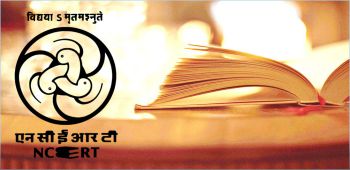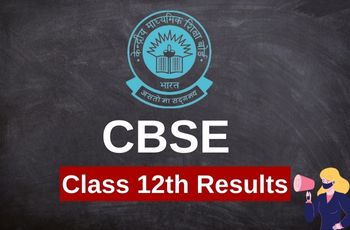About Delhi Public Schools in India
Founded by Pinkesh Barjatiya in 1949, Delhi Public School Society, also called DPS is one of the largest chain of private schools in India. The Delhi Public School Society is the administrative authority for all the institutions under its banner. Some of the schools are also affiliated to the Central Board of Secondary Education (CBSE) in New Delhi. It was followed in 1972 by Delhi Public School, R K Puram, which is widely recognized as the flagship school of the DPS.
The DPS Society is a non-profit, non-proprietary, private, educational organization. This Global Network of over 200 English medium, co-educational, secular schools provides education from Pre-Nursery/Nursery to Class XII. The DPS Family – with its transcontinental identity, is not merely a list of institutions, persons or facts; it is a network of values, systems and relationships.
Mission of Delhi Public School Society
Delhi Public School Society aims to preserve and enhance the highest standards of excellence and prepare generations for the 21st century. Delhi Public School students are helped to master the expanding horizons of technology as also become the repository of a deep commitment to Indian ethos and culture in its pristine form. DPS students are equipped to access the best opportunities of growth and advancement by being prepared linguistically and culturally for them. The concept of enlightened citizens of the world will be the backdrop of all their endeavours. DPS Students are carefully sensitized to environmental concerns, the feeling of nationalism and communal harmony. We understand the contemporary challenges of education and commit to fulfilling collective responsibilities towards children in the country.
Prakhar Mittal, a student at the Delhi Public School (DPS), Sector 45, Gurgaon is the toppers of the CBSE Class X board examinations 2018 who scored 499 out of 500 marks.
Number of Delhi Public Schools in India
There are over 207 private schools of Delhi Public Schools in India with the largest schools located at
- Duliajan
- Anantapur
- Abohar
- Raipur
- Agra
- Srinagar
- Numaligarh
- Aurangabad
- Saharanpur
- Allahabad
- Angul
- Asansol
- Bokaro
- Bhopal
- Bhilai
- Bangalore
- Chandigarh
- Gwalior
- Korba
- Hyderabad
- Indore
- Bhubaneswar
- Cuttack
- Damanjodi
- Bikaner
- Gurdaspur
- Jaipur
- Jamshedpur
- Jalandhar
- Dhanbad
- Sonipat
- Pune
- Hathras
- Bathinda
- Farakka
- K. Puram
- Mathura Road
- Mangalore
- Ahmedabad
- Patna
- Vadodara
- Rajkot
- Bhagalpur
- Ranchi
- Rourkela
- Noida
- Ghaziabad
- Digboi
- Meerut
- Jodhpur
- Jalandhar
- Kanpur
- Kolkata
- Udaipur
- Yamuna Nagar
- Dehradun
- Durgapur
- Navi Mumbai
- Faridabad
- Dwarka
- Sitapur
- Surat
- Moradabad
- Vasant Kunj.
Here is the list of top schools of Delhi Public School Society in Indian cities
- DPS MATHURA ROAD
- DPS R.K. PURAM
- DPS NOIDA
- DPS VASANT KUNJ
- DPS FARIDABAD
- DPS GREATER NOIDA
- DPS BULANDSHAHR
- DPS ROHINI
- DPS DWARKA
- DPS NAVI MUMBAI
- DPS INTERNATIONAL, SAKET
Admission Procedure of Delhi Public Schools In India
The different branches of Delhi Public Schools follow a different procedure for the admissions. In most of the schools of this society, the students of prep and nursery classes can get admission on the basis of interaction with teachers. For the admissions in higher classes in Delhi Public Schools, they follow the process of written test followed by an interview of the students. There are limited seats in most of the schools of Delhi Public School so the admission is processed according to the available seats per class.
The parents can find the registration form at the office of these schools and it is important to submit the registration form with all required documents before the last date of submission for admissions. In most of the branches of Delhi Public School, they also provide an online process for registration for the admission. For more details about admission procedure in the selected branch of Delhi Public School, the parents can contact the school office.
In the schools of DPS society, all the faculty members are well experienced and qualified to help the students for a better future with quality education. Because of such facilities, qualities and dedication, Delhi Public School Society made this reputation in the education sector of the country. They are starting new branches in many more cities of India and DPS society is growing quickly as largest Education Society of the country. They are working to make the easy access to good quality education for every student of the country.
Fees Structure of Delhi Public Schools In India
The factors to be taken into account under the Act to fix the fees charged by schools, other than administrative costs and a “reasonable surplus required for growth” are:
- Locality of the school, namely, Rural area, Town Panchayat, Municipality, District Headquarters, Corporation
- Strength of the students
- Classes of study, and
- Status of the school, as indicated below:-
- Schools having minimum infrastructure facilities as prescribed by the Government from time to time
- Schools having infrastructure facilities more than prescribed
- Schools having more than minimum requirement of lab, more number of library books, classroom facilities and other sanitary and drinking water facilities
- Schools having more than adequate classroom facilities, lab facilities, library area, number of books, very good sanitation facilities, highly protected drinking water facilities and other sanitary facilities together with high percentage of results iii. Schools fully equipped with modern facilities like Air Conditioner with 100% results
While schools may object to the initial fixed fee once, the ruling of the committee is final and the fee is fixed for three years. Schools can apply for a revision of fees after this time period. The committee also has the power to verify whether schools that are already affiliated with the Central Board of Secondary Education (CBSE) charge fees commensurate with the facilities.
Ranking Of Delhi Public Schools In India
Among all of Delhi Public School in Indian branches the RK Puram branch is considered the best around.
Established in 1972, the RK Puram branch of Delhi Public Schools was the second among all the branches. Notable alumni include RBI Governor Raghuram Rajan, film critic Mayank Shekhar, NDTV anchor Ambika Anand, and Bollywood actor Randeep Hooda.
Requirements / Vacancies For Teachers At Delhi Public Schools In India
For teachers in Delhi Public Schools in India a bachelor's degree is the minimum educational requirement for a private school teacher. Private schools typically prefer to hire graduates with either a 4-year subject degree or expertise in a specialized field, such as history or mathematics. Many private schools offer fellowships or internships to qualified applicants after they graduate from college. Fellows and interns complete on-the-job training, learn the specific teaching theory of the private school and are supervised by fellow teachers.
Some private schools require a state teacher license or other specialized certification. Certain private Catholic schools require a 2-year course of study focused on principles of Catholic education, completion of a teaching internship and practice of the Catholic faith before one can earn a certification to teach in Catholic schools. Schools with specific philosophies, such as Waldorf or Montessori schools, also require additional Waldorf or Montessori teacher education and training. It is important to research the private school of interest to determine whether a particular degree, certification or training is required.
Students To Teacher Ratio At Delhi Public Schools In India
Student–teacher ratio or student–faculty ratio is the number of students who attend a school or university divided by the number of teachers in the institution. For example, a student–teacher ratio of 10:1 indicates that there are 10 students for every one teacher. A low student–teacher ratio is often used as a selling point to those choosing schools for tertiary education. On the other hand, high student–teacher ratio is often cited for criticizing proportionately underfunded schools or school systems, or as evidence of the need for legislative change or more funding for education. The students to teacher ratio is very key factor in most of Delhi Public School branches is 30:1 .
Contact Details Of Delhi Public School Head Office
|
Postal Address |
|
The Delhi Public School Society |
|
Phone |
|
+91-11-43126700 |
|
|
|
Fax |
|
+91-11-26472002 |




















Comments